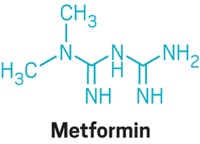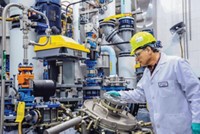Advertisement
Grab your lab coat. Let's get started
Welcome!
Welcome!
Create an account below to get 6 C&EN articles per month, receive newsletters and more - all free.
It seems this is your first time logging in online. Please enter the following information to continue.
As an ACS member you automatically get access to this site. All we need is few more details to create your reading experience.
Not you? Sign in with a different account.
Not you? Sign in with a different account.
ERROR 1
ERROR 1
ERROR 2
ERROR 2
ERROR 2
ERROR 2
ERROR 2
Password and Confirm password must match.
If you have an ACS member number, please enter it here so we can link this account to your membership. (optional)
ERROR 2
ACS values your privacy. By submitting your information, you are gaining access to C&EN and subscribing to our weekly newsletter. We use the information you provide to make your reading experience better, and we will never sell your data to third party members.
Pharmaceuticals
Sourcing Beyond China And India
Quality issues and rising costs could help shift the pharmaceutical chemical supply base to new emerging markets
by Ann M. Thayer
January 30, 2012
| A version of this story appeared in
Volume 90, Issue 5

If Western pharmaceutical chemical manufacturers are upbeat about anything these days, it is the return of some business lost to China and India. Recent quality and supply chain issues in Asia have helped U.S. and European active pharmaceutical ingredient (API) firms get back on stage. But Western firms can’t rest, because suppliers in several other countries are also vying for some time in the spotlight.
“API sourcing strategies over the past decade have shifted to India and China in order to take advantage of the lower cost of manufacturing,” Robert Kennedy, manager of industry research at Thomson Reuters, said in a seminar late last year. In parts of Asia, costs can be 50% below those in the West. But if labor, environmental, and regulatory compliance costs continue to rise as they have been, sourcing strategies may shift to alternative destinations, he added.
In China, rising inflation, fluctuating exchange rates, and reduced export subsidies are hurting business. So too are employee turnover rates, which can affect intellectual property (IP) protection, training needs, and quality, Kennedy said. “It is absolutely imperative that you have people on the ground to monitor manufacturing and supply chain activities.” Ensuring that current Good Manufacturing Practices (cGMP) are being met is “a very huge expenditure,” he added.
The cost of cGMP monitoring in India tends to be lower because more companies there have experience supplying regulated markets, Kennedy said. But India has other problems, such as inconsistent energy supplies, a poor transportation infrastructure, and an increasing reliance on Chinese raw materials and intermediates.
Since 2006, China and India have nearly doubled the number of “established” pharmaceutical chemical suppliers—those that have significant experience serving customers in strictly regulated markets—according to Thomson Reuters figures. “Established” and “inexperienced” firms in China and India make up about a quarter of the 435 suppliers serving customers in regulated markets; U.S. firms account for about a third. Of the 2,277 suppliers worldwide, another 314 have the potential to serve regulated markets in the future, while the remaining 1,528 are likely to remain strictly local suppliers.
About 10% of all suppliers are based in what Thomson Reuters calls the “second wave of emerging markets,” which includes Poland, Russia, South Korea, Taiwan, Argentina, Brazil, and Mexico. Although most firms in these countries fall into the “potential” and “local” categories, a number are gaining the capabilities and experience needed to serve regulated markets.
How soon API buyers consider these emerging-market suppliers as alternatives will hinge on their cost, quality, reliability, regulatory compliance, technical capabilities, and IP protection. “Obviously, the relative importance that one places on a combination of these factors has a direct impact on your sourcing strategy,” Kennedy pointed out. Quality, he said, is “perhaps one of the most important criteria.”
Leading the emerging countries, South Korea has about 80 API manufacturers. About 10% of them are established firms, and another 15% have the potential to emerge. According to Nitin D. Parekh, strategy and business director for the custom manufacturing service (CMS) division of SK, a South Korean conglomerate, few South Korean firms produce APIs because they can’t compete with lower cost companies from China and India. Instead, APIs purchased from Asia are made into finished generic drugs for the local market.
SK CMS tries to avoid this trap by focusing on high-margin proprietary intermediates and APIs. SK set up the business about 15 years ago, Parekh says, first trading and then moving into intermediates. “Within the past five years, we have become very active working with the major drug companies in the world for advanced intermediate and API supply from the kilogram to commercial scale,” he says.
SK CMS has a sales office in New Jersey and production, R&D, and quality-control facilities in South Korea. Last October, SK CMS finished revamping one of its three main plants to accommodate cGMP production. Along with expertise in enzymatic and asymmetric synthesis, the business leverages its parent company’s continuous process technology for making fine chemicals.

NOTE: From a survey of 2,619 pharmaceutical industry executives. a Includes U.S., Western Europe, and Japan. b Includes China, India, South Korea, and Brazil.
SOURCE: Nice Insight
South Korean API suppliers mostly target the Japanese market, which has high standards for quality and reliability, says SK CMS Vice President Jaeyon Yoon. Targeting a broader global customer base, SK competes with Western suppliers and the handful of top-tier Chinese firms that make APIs, he explains. In general, Yoon says, South Korean companies can compete at “about 80% of Western prices”—roughly where the top-tier Chinese firms are competing.
“Indian and Chinese companies may have a volume advantage, but they mostly play in the early intermediates and generic APIs space,” Parekh says, with India being ahead of China in handling complex chemistries. “If you can do a better job using your technology and other capabilities, not just offer a labor cost advantage, then there is room to compete.”
Moreover, South Korea offers IP protection and has free-trade agreements with the U.S. and Europe, Yoon points out. The South Korean government wants to increase exports of finished generic drugs and has been promoting the development of high-priced generic biologics.
Taiwanese companies also are using technology advantages to compete. Although Taiwan boasts high-tech industries and an educated population, “the island is small, it doesn’t have a lot of raw materials, and the costs of production are generally higher than in China,” explains Jo Shen, chief executive officer of ScinoPharm. Costs in inland China can be two-thirds less than in Taiwan, she says, whereas those in China’s coastal areas are similar.
As a result, ScinoPharm targets premium APIs that present technological barriers to make, such as highly potent oncology drugs. “Taiwan is not suitable for producing commodity products,” she adds. “The more difficult the product is, the more we have an advantage.” About 85% of the firm’s sales, which reached nearly $123 million in fiscal 2010, are in niche generics.
A growing portion of ScinoPharm’s business is custom manufacturing of new chemical entities (NCEs), an area in which China doesn’t really compete, Shen adds. The company has handled more than 70 NCE projects—three are now approved drugs and five are in Phase III development—that spanned from process development to bulk drug supply.
ScinoPharm accounts for about 65% of the country’s API exports, Shen says. ScinoPharm exports almost all of what it makes, with its sales split about equally among North America, Europe, and Asia. She says firms in India formulate ScinoPharm’s APIs for sale to other regulated markets.
At the same time, many of the APIs required for the local Taiwanese market are imported from China and India. Taiwan has about 20 API manufacturers, according to Thomson Reuters, and about half are capable of serving regulated markets. Shen calls it a “small community” of custom synthesis and generic drug suppliers that go after the highest standards of API supply.
Founded in 1997 by former Syntex managers, ScinoPharm set up in Taiwan because the government was supporting biotech and pharmaceutical firms through investments, tax incentives, and loans. The company had its first U.S. Food & Drug Administration inspection in 2001 and made its first commercial shipment in 2003. Last year it became publicly traded; the government holds a 15–20% stake.
“The impression is that API companies in Taiwan are following China and India and trying to catch up, but in fact before everybody was in China we were already providing global markets,” Shen says. “On quality, IP protection, and GMP compliance, we compete with some of the best and biggest API producers.”
Having built its Taiwanese operations to handle low-volume, high-margin products, ScinoPharm is adding large-volume cGMP facilities in Changshu, China. Initially it will make intermediates at the new site and later transfer APIs there. “We will continue to run the Taiwanese operations as a global supplier working with global customers, and then in China we will take advantage of local markets to expand our sales,” Shen says.
ScinoPharm envisions serving as a gateway in China for multinational drug company customers. And access is important, Shen adds, because it can be difficult to export APIs to China. Other non-Chinese suppliers are following similar strategies. The major drug firms, meanwhile, have been setting up R&D operations in China and looking to serve the local pharmaceutical market.
Access to local markets is becoming critical in other emerging regions. The Russian government has said it will invest $3.8 billion through its Pharma 2020 plan to modernize the domestic drug industry. According to Thomson Reuters, Russia has 43 API producers, but none has been inspected by FDA and only one has any potential to serve regulated markets. Finished-dose manufacturing is more prevalent, with about 100 providers, but experience exporting to regulated markets is very limited.
Only 15% of APIs consumed in Russia are made there, market analyst Monika Stefańczyk concluded in a report from the Polish research firm PMR. Instead, APIs come from China and India, costing half as much as those from nearby countries in Central and Eastern Europe. These price differences are diminishing, however.
By 2020, the Russian government would like to see domestic drug production account for 50% of all finished-drug sales by value. To get to that level, the government is expected to put restrictions on foreign suppliers and imports, while offering preferential pricing or reimbursements to domestic firms.
PMR estimates that leading foreign companies are likely to invest as much as a combined $2 billion to locate there. Already AstraZeneca, Novartis, Pfizer, and Sanofi have announced joint ventures or plants in Russia. For now, finished-dosage manufacturing and packaging of generic drugs is expected to be the main type of investment under the new program.
“To produce APIs in Russia for the Russian market is still a long way away,” says Theodore Iliopoulos, vice president for operations at Polpharma, a 77-year-old pharmaceutical and fine chemicals manufacturer in Poland. Although making APIs in Russia would be a logical next step to support dosage manufacturing, “so far I have not seen anyone announcing that they are going to invest in API manufacturing facilities in Russia,” he says.
In December, Russia cleared the final hurdle to become a member of the World Trade Organization (WTO), and it could join in the next six months. The Pharmaceutical Research & Manufacturers of America supports the move, saying it will lead to a “greatly improved business climate,” but the trade association also points out that “Russia’s intellectual property protection has been lacking.” WTO membership does come with a provision for keeping six years of regulatory data confidential.
Besides a record of poor data confidentiality, Russia’s drug industry has problems with corruption, bureaucracy, and counterfeiting, according to Molly Bowman, manager of small-molecule research at Thomson Reuters. The Association of International Pharmaceutical Manufacturers, based in Moscow, has committed to fighting counterfeit medicines.
And although Russia could be a base for low-cost API production, “the lack of implemented GMP is a considerable hurdle to supplying regulated markets,” Bowman said during the Thomson Reuter seminar. The cost of trying to comply would likely put some suppliers out of business, which runs counter to the government’s interest in expanding production.
“Implementation of GMP standards by Russian manufacturers is slow, and the deadline has been moved several times,” Stefańczyk pointed out in the PMR report. At present, all companies in Russia are required to comply by January 2014, which might allow the country to join the World Health Organization’s pharmaceutical quality-assurance system. In October 2011, the U.S. Pharmacopeial Convention and the Russian Ministry of Health & Social Development agreed to cooperate on improving drug quality.
Polpharma has a majority stake, soon to rise to 100%, in Russia’s Akrikhin, which makes dosage-form drugs, and interests in firms in Turkey and Kazakhstan. “We are by far the leader in Poland in generic pharma, finished-dosage form, and at the same time we are the largest API manufacturer in Poland, and even in Central and Eastern Europe,” Iliopoulos says. Although Croatia, Hungary, Slovenia, and other Central and Eastern European countries have API manufacturers, many of them have been acquired by multinational generic drug firms or produce only for internal use.

Poland and the Czech Republic are still the most attractive locations for custom manufacturing in Central Europe, according to PMR. Higher production costs compared with China and India are a trade-off for the region’s relatively wide application of GMP standards.
Advertisement
More than 75% of Polpharma’s APIs are sold to outside customers, with about 68% going to Europe, 17% to North America, and the rest largely to Japan and South Korea. “We also have sales of APIs from Poland to India, and we are about to strike an agreement for sales of APIs to China,” Iliopoulos says. In 2009, Polpharma partnered with India’s Dishman Group on API development, and it has agreements with small European technology firms.
Although Polpharma’s primary business is generic APIs, the company has been offering more custom manufacturing, Iliopoulos says. Its API plant in Starogard Gdański, Poland, was first approved by FDA in 1995, and the company also produces finished-dose drugs. In recent years, its focus has been on expanding capacity, maintaining cGMP, and improving safety and environmental protection.
The company’s business plan is to grow organically and maybe look to acquire small fine chemicals players, possibly in China or India, Iliopoulos adds. He says Polpharma can offer quality, a low-risk supply chain, and affordability.
“For the moment we still have this advantage” over China and India, he says, but quality and costs should eventually converge. When that time comes, Europe can still be competitive by applying advanced technology to small-volume, high-value niches, Iliopoulos proposes.
Following the pattern seen for China and India, companies in South Africa, Vietnam, and other Asia-Pacific countries might emerge in the future, Iliopoulos believes. “South Africa is already manufacturing finished dosages and potentially will be the first to expand on the continent,” he says. Partnering with established drug and manufacturing firms is one way South African companies are trying to raise their profiles.
It will take time, however, for emerging-market manufacturers to develop the needed standards for serving regulated markets. Meanwhile, despite the problems that drove some business back to the West, China and India shouldn’t be counted out. India already has a large manufacturing capacity focused on regulated markets and more FDA-approved facilities than any country but the U.S., according to Thomson Reuters.
In 2011, China’s State FDA put in place new GMP regulations modeled on those in the U.S. and Europe. Companies have until 2015 to comply. “We expect to see much more oversight from the SFDA in addition to a greater enforcement of waste treatment,” Bowman said.
Complying with the regulations, upgrading facilities, and training staff will add costs that many small companies, which make up the bulk of China’s industry, can’t afford. Those that remain in business may focus on supplying the large domestic market, which can be quite profitable, Kennedy noted. “Certainly those companies that wish to ascend the supply chain will need to invest in the facilities and their people, as well as gain the trust of major global players.
“It took Indian companies almost a decade to become a predictable force in the U.S. generics market, so I think it remains to be seen how quickly and aggressively Chinese companies will make their mark in the U.S.,” Kennedy continued. Just as Indian suppliers moved from making intermediates and APIs to finished dosages, Chinese firms are expected to invest in finished-dose production for the U.S. and Europe.
Owing to such investments, Bowman has her doubts about the prospects for firms in other emerging countries. “We do not expect to see API manufacturing move into second-wave emerging markets anytime soon,” she said. In markets that have experienced suppliers, such as South Korea and Taiwan, “there is little indication of acceptable quality at better prices than in India and China.”





Join the conversation
Contact the reporter
Submit a Letter to the Editor for publication
Engage with us on Twitter